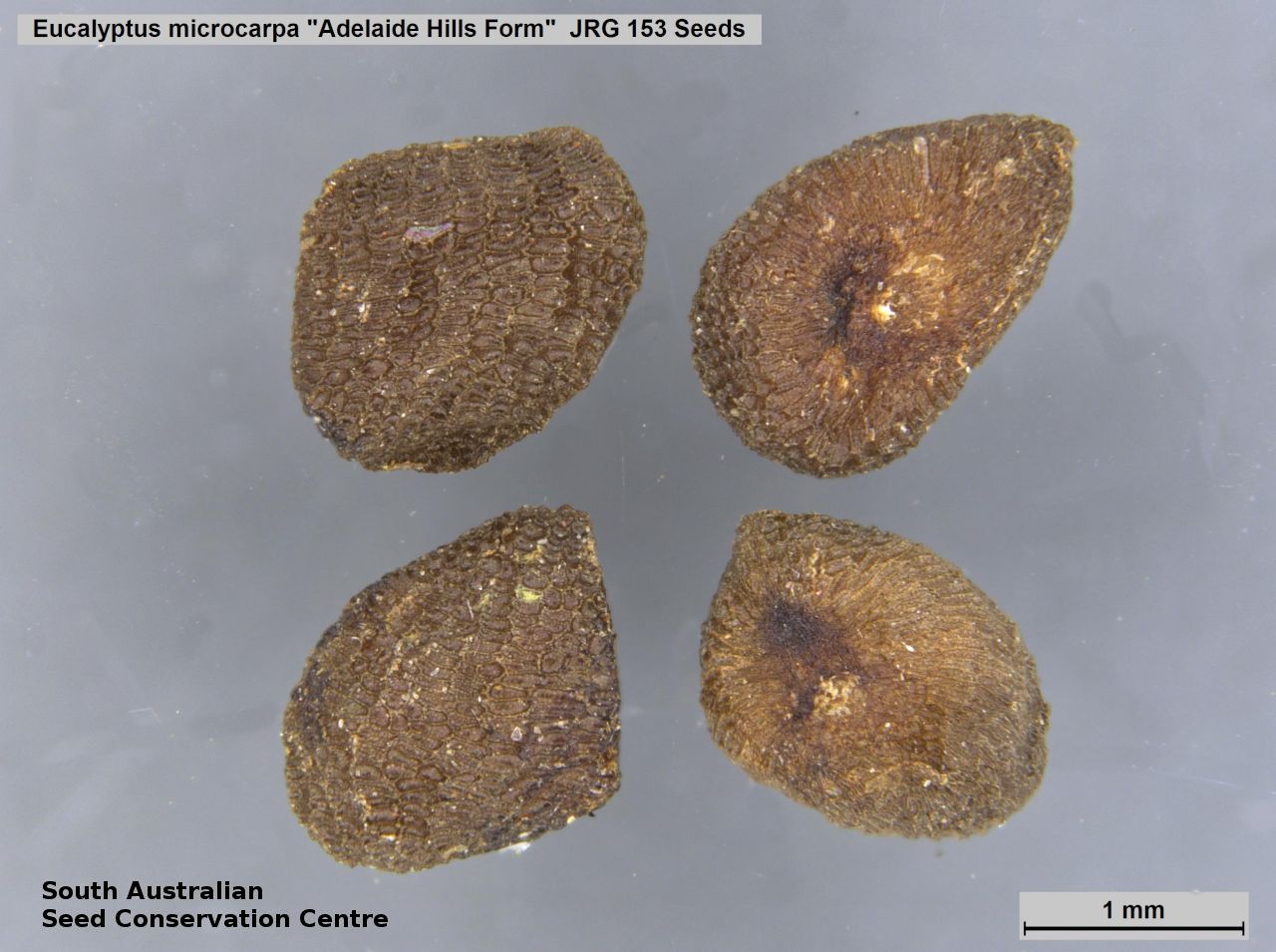


Etymology
Eucalyptus from the Greek 'eu' meaning well and 'calyptos' meaning covered; alluding to the cap or lid which covers the stamens in the bud. Microcarpa from the Greek 'micros' meaning small and 'carpos' meaning fruit; referring to the relatively small fruits of the species. Adelaide Variant refers to its distribution in the Adelaide region.
Distribution and status
Endemic to South Australia and found only in the only in the Adelaide Plains and adjacent Mount Lofty Ranges. Native. Rare in South Australia.
Herbarium regions: Southern Lofty, Green Adelaide
NRM region: Adelaide and Mount Lofty Ranges
AVH map: SA distribution map (external link)
Plant description
Single or multi-stem tree to 25 m tall with finely fissured rough bark over the whole trunk and to base of larger branches. Juvenile leaves ovate, grey-green. Adult leaves lanceolate, dull to glossy, green. Flowers terminal and axillary in groups of 7, smooth or slightly angular, clavate to ovoid, bud-cap conical equal in length to the base. This variant differ from Eucalyptus microcarpa by having finer fissured rough bark, shorter adult leaves, shorter and more ovoid buds and less elongated fruit. Flowers white appearing in summer to winter. Fruits are barrel-shaped fruit to 7 mm long and 5 mm wide, smooth or slightly angular, disc descending, valves 3 or 4 at rim level. Seeds are brown ovoid seed to 2 mm long and 1.5 mm wide, with a fine mesh-like surface. Seed embryo type is folded.
Seed collection and propagation
Collect seeds between January and December. Collect mature fruits that are dark and hard (difficult to break with a finger nail), with the valves un-open any time of year. Leave the fruits in a breathable container in a dry room for one to two weeks. This allows the valves on the fruit to open and release the seeds. Separate the seeds by placing all the materials into a bucket and shaking it to dislodge the seeds. Pass the material through a sieve to separate the unwanted material. The finer material will contain both seeds (soft) and frass (hard) usually distinguishable from each other but can be very similar in shape and colour. With finer sieves, the seeds can be separated from the frass but this is not essential for storage or propagation. Store the seeds with a desiccant such as dried silica beads or dry rice, in an air tight container in a cool and dry place. From one collection, the seed viability was high, at 95% Seeds are non-dormant, viable seed should germinate readily.